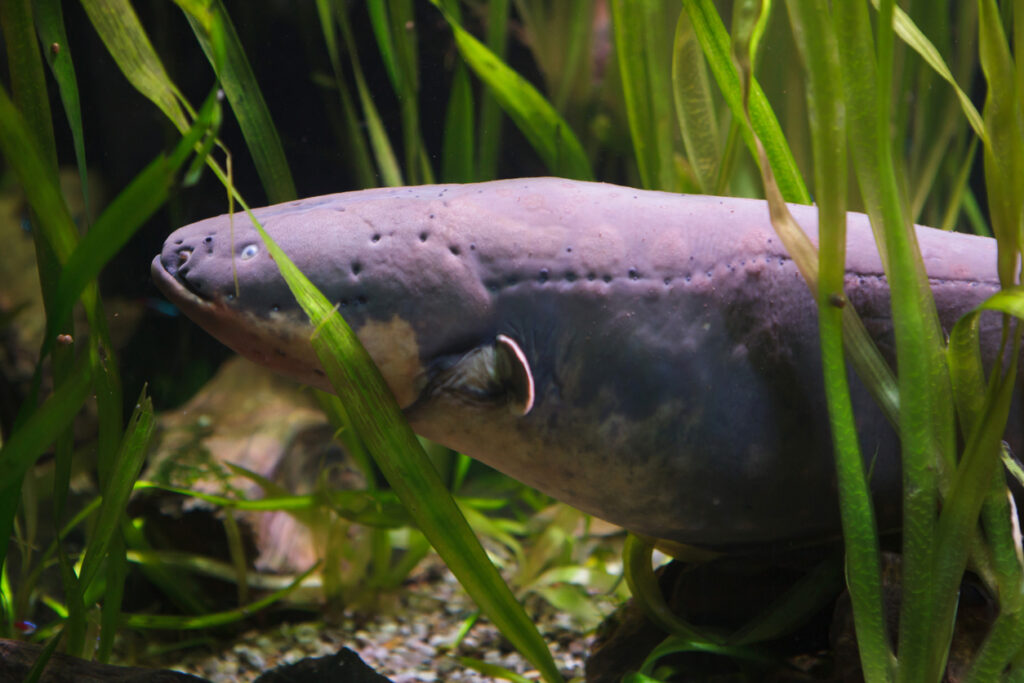Why would a fish need to swim backwards? If you’ve never really given this question a lot of thought, we can’t blame you. It’s not like we as humans ever find ourselves in situations where we’d need to walk backwards, after all – so why would a fish?
Nevertheless, we’ll see whether fish can reverse when they’re in the water in more detail for you below…
Which fish can swim backwards?
Before we answer that, let’s take a look at the reason you’ve clicked on this article: “can fish swim backwards?”
Yes, fish can absolutely swim backwards! The majority of them obviously swim forwards, but most of them have the ability to do the backstroke a bit like us humans too.
So, what are some fish that can swim backwards?
- Eel
Some of them are better than others, of course. Eels are particularly good at it, swimming in an anguilliform (basically, eel-like) motion because of their long, flexible bodies.
- Triggerfish
Triggerfish are also adept at swimming backwards. They’re an odd species to begin with anyway, since they don’t actually move their body while swimming. They use fins at the top and bottom of their bodies to swim – and they do the same to swim backwards too.
- Bluegill Sunfish
When the Bluegill Sunfish slams on the brakes to back up, the muscles in their fins tighten for a moment, before creating jets that reverse the fish’s momentum. This makes it a little wobbly, but its caudal fins help stop the sunfish from toppling over when it’s in reverse.
- Black Ghost Knifefish
Is this the most awesome sounding fish to ever exist? It’s definitely up there, and its long, flat body also makes it great at swimming backwards. In fact, swimming backwards is a huge part of how it hunts for prey – by going in reverse, they can lunge on unsuspecting creatures without the need to circle around them.

How do fish swim backwards?
There isn’t a single mechanism that all fish use to swim backwards, it depends largely on the type of fish.
For the most part though, most fish tend to rely on their caudal and anal fins to create momentum in the opposite direction.
Eels, on the other hand, move with a unique S-shape, which is how they move forward. They reverse this motion if they need to move backwards.
Why can’t fish swim backwards for long?
It’s worth mentioning that some fish can’t swim backwards for very long or at high speeds. This is down to their gills needing forward movement so they can take in water. If they swim too far backward, or it they’re pulled back by the tail, it may cause them to suffocate. Plus, backward movement is slow and tiring – they’re far more comfortable moving forwards instead!
Why do fish swim backwards?
So, are fish that can swim backwards simply showing off, or is there a reason why they want might to move in the opposite direction? Actually, there’s a few different reasons they might need to swim backwards.
Let’s say there’s some tasty-looking food up for grabs. If a piece of grub passes by the fish, then another fish may eat it instead. Quickly reversing can stop this from happening.
Or maybe an aggressive fish might approach one that’s a bit more timid. This timid fish might reverse to show that it doesn’t want to fight – this is common when a fish accidentally swims into the territory of a more aggressive fish.
This tactic is a great way of hiding from predators too, where backing up into seaweed, corals or sea anemone can provide them with some much-needed camouflage so they can stay safe.
In the case of electric eels, they need to swim backwards so they can shock their prey or predator. When these kinds of fish detect something behind them, they reverse so their mouth is pointing at the other creature. This puts them in the prime position to administer their electric pulses.

Do fish swim backwards when they’re in a group?
Clearly, fish swim backwards for specific reasons. When they swim together in a group – or a school – it’s for specific reasons too, including protecting themselves from predators, making hunting prey easier and helping them to swim without using too much of their own energy.
Because there is little overlap in these reasons, it would probably be pretty rare that an entire group of fish would swim backwards at any one time. It’d certainly make trying to hide from predators more of a challenge if it was the case!
Why can’t sharks swim backwards?
So, what fish can’t swim backwards you might be asking. Sharks are among the fish which can’t, and there’s a reason for that. A few, in fact.
Their big, flat heads make it particularly difficult, for start. The shape creates drag whenever they attempt to swim backwards, making it a struggle to stay stable. It slows them down a lot too.
The location of their fins also poses a problem. Sharks’ pectoral fins are placed in a way that stop them producing lift in a backwards motion – so they stick to moving forwards instead.
That said, both the nurse shark and the white shark have been shown to move backwards, but it’s usually slowly, with great difficult and only ever as a last resort.
Enjoyed this back-to-front look at fishy movement? We can’t promise you’ll see it for yourself, but you can still be wowed by all sorts of sea creatures at Deep Sea World. Ahead of your visit, head here for more info.
